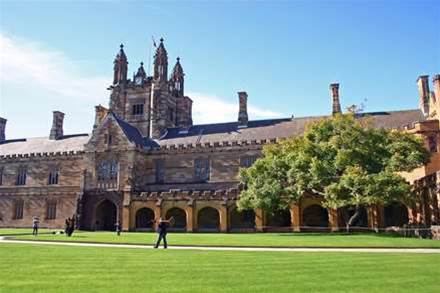The University of Sydney has embarked on a pilot project that could see it deliver virtual applications to students’ personal machines next year.
The opt-in pilot commenced in late July with 200 students, building on virtual desktop technology that was deployed under a wider government-funded project early this year.
Sydney University received a total of $27 million from the Federal Government’s 2008 Teaching and Learning Capital (TLC) Fund, including about $6 million that was spent on IT.
In March, the TLC project delivered 600 new Dell desktops in four “Learning Hubs”, running Citrix virtual desktop technology and 300 applications in a custom “app store”.
Applications were delivered from VMware-virtualised Cisco, HP and IBM infrastructure in the university’s 3.5-year-old data centre, operated by Global Switch in Glebe.
Three quarters of Sydney University’s app store applications – including MATLAB, Microsoft Office and some Adobe software – were streamed from the data centre and run on the end-device.
A further 7 percent of applications were designed to run completely on data centre servers, with users viewing “screenshots”, while 18 percent had to be built into the operating system.
Chief information officer Bruce Meikle said the virtual desktops allowed students to access the software they needed without being forced to use physical machines in specific buildings.
He described the project as a large one with “a lot of moving parts” for his 250-person IT team.
“We worked on it over a period of two to three years, in terms of getting the federal funding, building infrastructure and getting licensing sorted out,” he said.
“Our real goal is to get it on students’ own devices so they can [use university software] wherever, whenever,” he said, expecting students to work increasingly on university projects from home as the high-speed national broadband network (NBN) reached more addresses.
Meikle said the university was evaluating the ease-of-use of virtual desktops in the bring-your-own device trial and hoped to roll the technology out to all 50,000 students next year.
Students would have access to a limited subset of the university’s 300 app store applications on their personal machines, to comply with software licensing restrictions.
The university had no plans to roll out virtual desktops to staff currently.
Network upgrade
Last November, Sydney University vice-chancellor Michael Spence announced plans to cut 340 jobs to free up $53 million in funding for building and ICT investments.
Meikle expected the university’s capital IT budget to grow from about $70 million to $80 million next year.
“The plan is to have a bit more in our budget for 2013 than we had in the past couple of years,” he told iTnews.
While the university had already installed new servers and storage to support virtual desktops, Meikle noted that it was in need of a network upgrade to support BYO machines.
In recent years, Sydney University has worked to establish a “solid” core network, connecting research network AARNet to its data centre and campus.
The university saw a 50 percent increase in its number of wireless access points across campus this year, with “the demand for wireless … ever increasing”, Meikle said.
But a majority of its on-campus wired networks have not been upgraded for more than a decade, with some buildings still using telecommunications cables from the 1970s.
Meikle said the university had upgraded Cisco networking infrastructure in a dozen of “close to 100 buildings across campus” that were in need of upgrades.
“What was a very old and flat open network has been replaced with modular virtual area networks that give us a lot more control,” he said.
“It’s a huge task; we’re doing it over several years ... to manage the funding, [project] size and scope.”
Meikle said network upgrades would be timed to minimise disruption to classes.
He highlighted a 60 percent year-on-year increase in network traffic across the university and expected the growth to continue with demand for remote learning and video streaming.
Meikle said the university's computers continued to be in high demand despite welcoming students’ personal devices onto the university network.
“We haven’t seen a drop off in the usage of computers on campus,” he said.






























